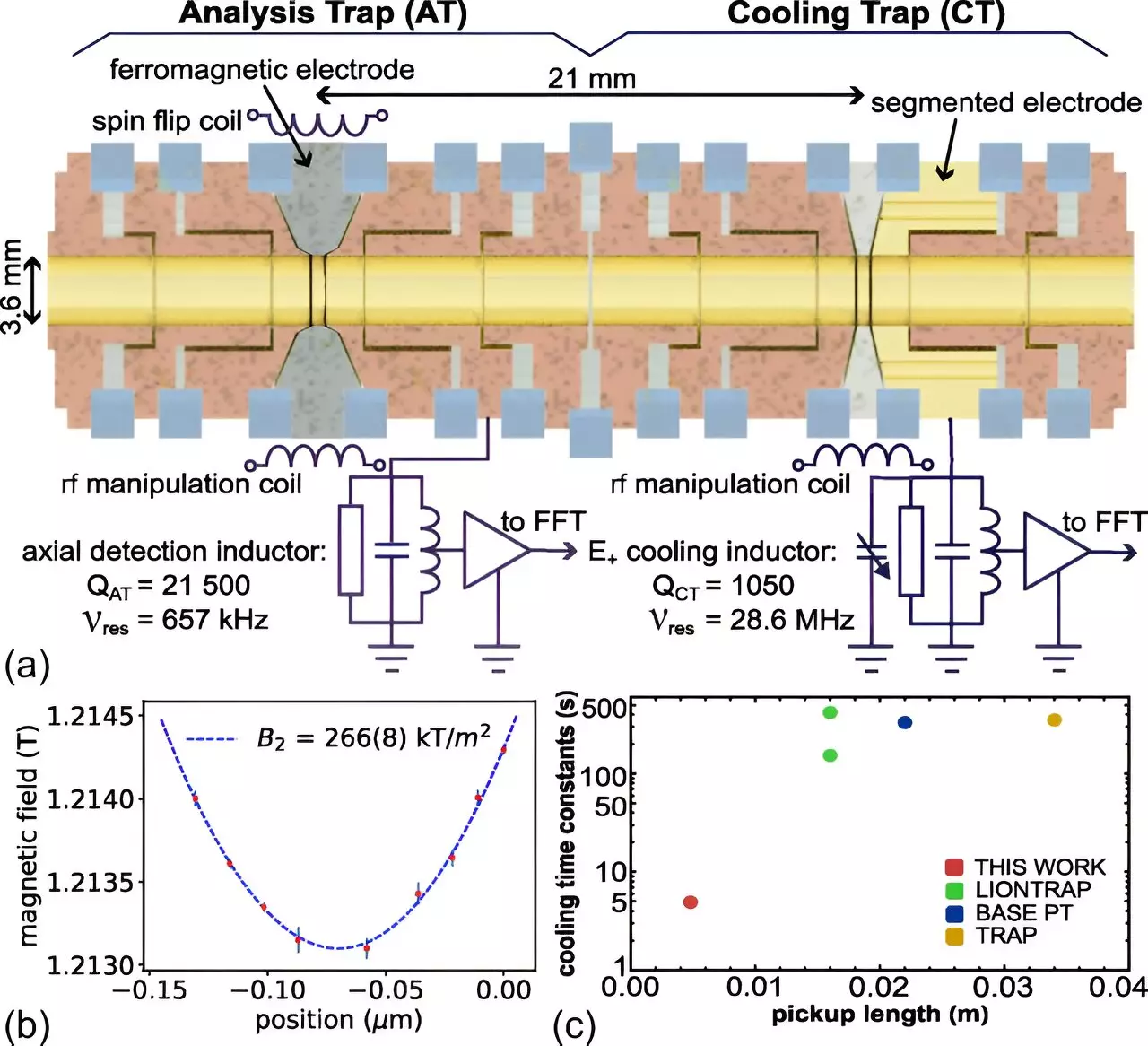The universe, as we know it, is a realm where matter reigns supreme. However, underlying this dominance of matter is a puzzling question – why is there such an apparent lack of antimatter? The concept of antimatter, the mirror opposite of ordinary matter, has long baffled scientists due to its scarcity in the known universe. The BASE international research collaboration, spearheaded by Professor Dr. Stefan Ulmer from Heinrich Heine University Düsseldorf (HHU), aims to delve deeper into this dilemma by conducting groundbreaking experiments at the European Organization for Nuclear Research (CERN) in Geneva.
In their quest to unlock the secrets of matter-antimatter asymmetries, the BASE collaboration has developed innovative techniques to study the properties of antiprotons. Antiprotons, the antimatter counterparts of protons, offer valuable insights into the fundamental nature of particles and their interactions. By cooling individual antiprotons at an accelerated rate through a specially designed trap, researchers can now measure the mass and magnetic moment of these particles with unprecedented precision. This leap in technology paves the way for detecting subtle differences between matter and antimatter on a minuscule scale.
The standard model of particle physics predicts a perfect balance between the creation and annihilation of matter and antimatter particles. Yet, the observed dominance of matter in the universe contradicts this equilibrium, suggesting the presence of hidden mechanisms at play. Physicists have long sought to expand upon the standard model to account for this anomaly, necessitating the need for precise measurements of key physical parameters. The BASE collaboration, comprising leading institutions across Europe and Japan, is at the forefront of this scientific inquiry, striving to shed light on the mysteries of particle physics.
One of the pivotal breakthroughs achieved by the BASE collaboration is the development of a cutting-edge cooling trap for antiprotons. Traditionally, cooling antiprotons to ultra-low temperatures required considerable time and effort, limiting the scope of experiments. However, with the introduction of the Maxwell’s daemon cooling double trap, researchers can now rapidly cool individual antiprotons within a fraction of the previous timeframe. This innovative approach not only streamlines the experimental process but also enhances the accuracy of measurements, enabling researchers to delve deeper into the properties of antimatter.
By harnessing the power of high-resolution spin-flip quantum transitions, physicists can delve into the intricate details of proton spin and magnetic moments in antiprotons. The ability to measure these fundamental parameters with unprecedented accuracy opens up new avenues for exploring the subtle differences between matter and antimatter. With each iteration of measurements, the BASE collaboration aims to refine their techniques further, moving towards an era of particle physics where the mysteries of antimatter are gradually unveiled.
As the BASE collaboration continues to make strides in the field of antimatter research, the possibilities for unveiling the secrets of the universe’s composition are seemingly endless. By constructing a mobile particle trap to transport antiprotons from CERN to a new laboratory at HHU, researchers hope to enhance the accuracy of their measurements even further. This dedication to pushing the boundaries of particle physics underscores the commitment of scientists to unraveling the mysteries of the cosmos, one antiproton at a time.


Leave a Reply